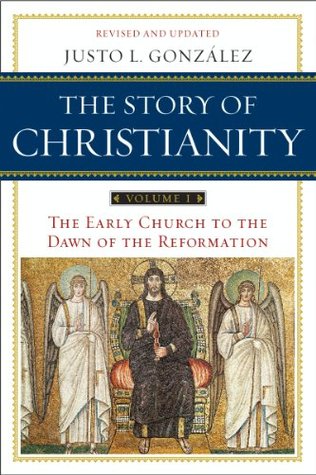More on this book
Community
Kindle Notes & Highlights
Read between
August 11 - October 9, 2017
it is not surprising that monasticism, which through the ages has shown its enormous adaptability, would take new shapes that both questioned the mores of the monetary economy and responded to the needs of a population on the move.
Francis had a profound religious experience that led him to embrace a life of poverty.
His place would not be in quiet solitude, but in the bustle of the cities, wherever people were, preaching to them, helping the poor and the sick.
Innocent was wiser than his predecessors, and, after testing Francis’s mettle, yielded.
Franciscans preaching, singing, and begging became a common sight throughout Western Europe.
When his followers began to be respected, he began to fear for their humility.
Francis made a will forbidding his followers to possess anything, or to appeal to the pope or to anyone else to have the Rule that he had given them made less stringent.
The founder of the other major mendicant order was Saint Dominic.
From its very beginnings, the Order of Preachers—for such was the official name of the Dominicans—emphasized study.
They had sister organizations for women, and even a “third order” of people who followed the piety and practices of the Franciscans or the Dominicans, but without becoming monastics nor abandoning their secular roles in society.
Their main objective was preaching, teaching, and study, and poverty was seen as a means to that end.
the order founded by Saint Francis had a stormy history.
Shortly after Francis’s death, two parties had developed within the order.
the rigorists became increasingly alienated from the hierarchy of the church.
The Concordat of Worms (1122), which granted the emperor the power to invest bishops with secular authority but not with sacred authority, did not end the difficulties of the papacy.
the emperor died, and Innocent’s relations with the new emperor deteriorated.
A number of imperial cities rebelled and proclaimed themselves republics.
Soon it was clear that Henry sought to control the papacy, and Pope Celestine III excommunicated him. Open warfare seemed inevitable when both the emperor and the pope died.
under the name of Innocent III became the most powerful pope in the history of Christianity.
placed the child under the protection of the pope by declaring the kingdom of Sicily a fiefdom of the papacy.
The imperial crown, which Henry had also held, was not hereditary. Rather, the emperor was elected from among the nobles.
The temporal power and the spiritual power, he claimed, have both been instituted by God.
With the pope’s support, Frederick, now grown, crossed the Alps, appeared in Germany, and wrested the imperial crown from his uncle.
there was hardly a European monarch who did not feel the weight of his authority.
the pope’s authority had prevailed over one of the most powerful sovereigns of the time.
Innocent and John clashed over the question of who was the legitimate archbishop of Canterbury.
John capitulated and made his entire kingdom a fief of the papacy,
Innocent also intervened repeatedly in Spain.
a further irony of history is that one of the sons of that forbidden union, Ferdinand III of Castile and Leon, became a saint of the church.
the Fourth Crusade, in taking Constantinople and establishing there a Latin Empire, further extended the reach of his power.
In all of these events, Innocent played a leading role.
During its brief three sessions, this council approved an entire program of reformation dictated by the pope.
it is clear that most of these measures were not the result of the assembly’s deliberation, but that they were rather part of a program that Innocent had determined, and which he had the council approve.
When Nicholas died, there was disagreement among the cardinals.
Since he knew nothing—and wished to know nothing—of the political realities of his time, he soon became a tool of Charles II of Naples,
less that a year after his election, Celestine decided to abdicate after a brief pontificate.
The thirteenth century, which marked the apex of papal power and the birth of the mendicant orders, was also the high point of medieval scholasticism.
The most important forerunner of scholasticism was Anselm of Canterbury.
Anselm spent most of his career exiled from Canterbury.
Anselm’s significance for the development of scholasticism lies in his desire to apply reason to questions of faith.
Anselm believed in the existence of God. But he sought to understand more deeply what that existence meant.
Anselm’s argument is that when one thinks of God, one is thinking of that than which no greater can be thought.
For this reason, there is need for a divine-human, God incarnate, who through his suffering and death offers satisfaction for the sins of all humankind.
Abelard came to view his life as a series of calamities.
Abelard’s purpose, however, does not seem to have been to discredit the authorities he set against each other, but simply to show that theology must not be content with citing authorities.
What the scholastics did (and Abelard did not do) was to then offer an answer and “solutions,” which demonstrated how it was possible for all the authorities quoted to be correct.
A very important point on which Peter Lombard left his mark in theology was his determination that there are seven sacraments:
two developments were significant for the early history of scholasticism: the growth of universities and the reintroduction of the teachings of Aristotle into Western Europe.
these were not so much institutions like our modern universities as they were guilds of scholars, both teachers and students, organized in order to defend the rights of their members, and to certify the level of proficiency achieved by each.
most Christian theologians, particularly in the West, had grown accustomed to what was essentially a Platonic or Neoplatonic philosophy,


